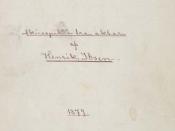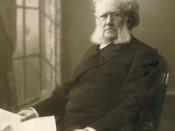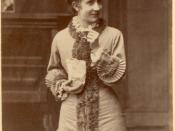Henrik Ibsen has masterfully infused symbolic elements into his work A Doll's House. The plot has been carefully crafted with many underlying ideas which provoke the reader to probe into the deeper meaning of the story. Symbolism can add mountains of value to any work, in the case of this 19th century masterpiece, it adds plenty. In Sourcebk Naturalist Theatre, symbolism is further explained, "Given its poetic basis, implying an idealized and interior depiction of human activity, symbolism is generally seen as the opposite of Naturalism. However, the major plays of naturalistic canon are structured around symbols, and their central importance is demonstrated by the frequency with which these controlling symbols appear in the titles." (C D Innes, p. 25) It is the imagery presented in the intertextuality gives the reader an insight into the conflicts that plague the characters of the play. Such metaphors and canonical texts are interspersed within the play at various intervals.
Through the symbolism Ibsen has successfully explored various themes, by manipulating the characters. Writing about the realism in Ibsen's plays, Kimball King noted in his analysis of the symbolism in A Doll's House, "A Doll's House inaugurates the mature phase of dramatic realism, with its symbolic, detailed setting and evocative props - a Christmas tree, macaroons, and a dance costume - all of which Ibsen uses to comment on Nora's awareness of society's negative influence on her" (King, p. 504). In effect this particular story is Nora's story, the symbols her symbols, the plot belongs to a character that lacked character to begin with. Through the use of the imagery and symbolism Ibsen managed to pull at the audience; his subliminal approach gives us more of an insight into the story than any direct approach could have.
Ibsen has used symbolism...


